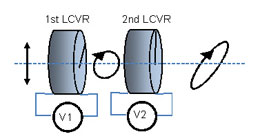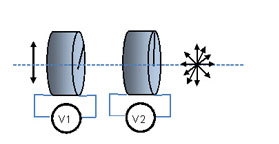Most SOP generators found on the market are expensive and based on fiber optics technology. The Arcoptix free space Polarization State Generator (PSG) or also called Eigen State Generator (EGS), is a transmitive free space optical system that permits to generate any arbitrary Polarization state (linear, elliptic, circular) from a linear input Polarization. You can, for example, transform a vertically linear polarized laser beam into a polarized beam of any angular direction as for example 10°,15°,25°,... the device works for any wavelength in VIS range and does not need any particular adaptation.
The PSG is electrically driven (low voltage) and has no moving part. The electrical driver is connected to a PC via an USB connection and the PSG is controlled with a "easy to use" software. Also, the PSG is fully programmable and can be controlled via a DLL with a custom made program or a LabVIEW VI for example.
The compact design with 25 mm in diameter permits to insert the device in standard opto-mechanical laboratory parts without any special adaptation.
- Optimized for free space optics
- Spectral range from 400 to 1000nm
- Electrically driven
- Fully programmable
- Easy to adapt to standard optics
- Compact
- Temperature controlled
- Easy to use software
- Labview compatible
- USB powered
- Cost effective
For further information, contact ARCoptix: info@arcoptix.com


 DOWNLOAD
DOWNLOAD